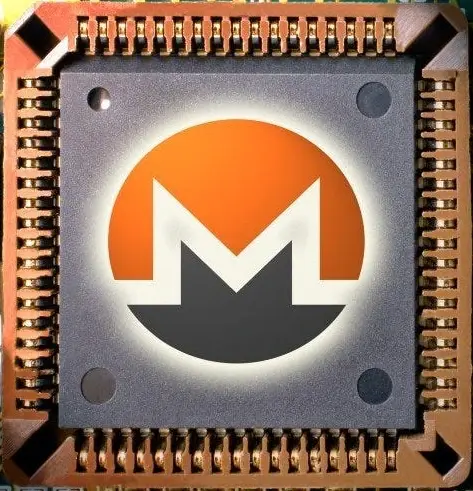⛏️ Fair CPU pool mining introduction
Monero (XMR) is one of the only projects
which offer a way of mining in a pool as it should be implemented,
with P2Pool:
- Fair - Instant payouts according to your share.
- Decentralized - No pool owners - No centralized party handling the P2Pool.
- Decentralized - Pool participants - Due to the RandomX algorithm being used, no specialized Antic miners can be built for XMR. Meaning that an average Joe can still participate and earn shares with their CPU.
- Private - XMR itself continuously aims for the best possible privacy cryptography can offer.
Source Code / Links:
- Gupax: A GUI (Graphical User Interface),
to easily mine Monero on P2Pool using XMRig
https://github.com/hinto-janai/gupax
https://gupax.io/ - P2Pool: Peer to peer pool, truly decentralized pool for Monero mining
https://github.com/SChernykh/p2pool
https://p2pool.io/mini/#pool
https://p2pool.io/#pool - XMRig: RandomX, KawPow, CryptoNight and GhostRider unified CPU/GPU miner
https://github.com/xmrig/xmrig
https://xmrig.com/ - RandomX: Proof of work algorithm based on random code execution
https://github.com/tevador/RandomX - Monero: The secure, private, untraceable cryptocurrency
https://github.com/monero-project/monero
https://www.getmonero.org/ - Monero GUI: Official Monero GUI, for wallet, miner and monerod node
https://github.com/monero-project/monero-gui - P2Pool Observer: Monitor various P2Pool stats
https://mini.p2pool.observer/
https://p2pool.observer - XMRvsBeast: Enter a free lottery, only for participating XMR miners,
to win a chance of a short, but serious boost in your hash-rate / payouts!
https://xmrvsbeast.com/p2pool/ - Monero Fail: An extensive list of publicly hosted monerod nodes
https://monero.fail/
⛏️ Fair CPU pool mining guide
This guide will help you setting up a fair Monero miner,
please note, that you still will have to create your own config files for:
Gupax, P2Pool and XMRig
- Use Monero GUI to create a wallet
- Use Monero GUI to run your own monerod instance (Monero Node daemon),
configure following startup flags under:
Monero GUI => Settings => Node => Daemon startup flags:--zmq-pub=tcp://127.0.0.1:18083 --out-peers 32 --in-peers 64 --add-priority-node=p2pmd.xmrvsbeast.com:18081 --add-priority-node=nodes.hashvault.pro:18081 --disable-dns-checkpoints --enable-dns-blocklist --prune-blockchain --sync-pruned-blocks --db-sync-mode=safe --log-level 1
These startup flags will help with:
- Blocking malicious nodes
- Keeping your copy of the blockchain as small as possible
- Provide logging incase a
priority-nodegoes down
(Use Monero Fail for replacements)
- Configure the P2Pool + XMRig binary paths in Gupax under:
Gupax => Gupax => P2Pool/XMRig PATHs - Use Gupax to run P2Pool,
connect to your local monerod instance by configuring P2Pool as following:
Gupax => P2Pool => P2Pool Mini => Fill in the following:Name = Local Monero Node IP = 127.0.0.1 RPC = 18081 ZMQ = 18083 Out-peers = 32 In-peers = 64 - Use Gupax to run XMRig,
connect to your local P2Pool as following:
Gupax => XMRig => Command arguments (configure--threadsas desired):-c config.json -o 127.0.0.1:3333 --http-host 127.0.0.1 --http-port 18088 --threads 30
This will make it possible to load a config.json file from the same directory as the XMRig binary
Notes
- If you’re gonna run on normal end-user hardware (e.g. Desktop/Laptop/Smartphone), then I’d recommend to mine on P2Pool Mini instead of the main P2Pool
- Your P2Pool wallet adress is public, periodically move mined funds to a new, truly private XMR wallet
- My use-case? I mine to support the cause and to earn a little back from heating my room during winter times 😄


I am mining just for fun and to help the network. I honestly never expect an ROI other than the fun of mining.
Imo, you never know what will happen 😄
I do sincerely hope,
that humanity will eventually opt-in to switch to a fair decentralized crypto currency like Monero.
In which case, one could earn a decent amount from early mined coins.
I hope that, because our current deficit spending / fractional banking FIAT currency systems,
will eventually lead to guaranteed hyper inflation.
However open source projects like the XMR community,
don’t have the billions of funds available to market their product down consumers throats.
Which central bankers will be able to do with CBDCs (Central Bank Digital Currencies),
which are basically FIAT 2.0, but now with even less rights and privacy over your money!
So you could say I’m mining for hope that good will eventually prevail over evil 🙂